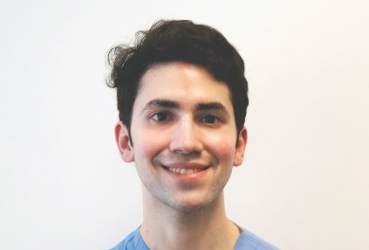If you manage to struggle your way to the back of the October 2014 Pediatrics, you will find a clinical report authored by members of the American Academy of Pediatrics Section on Integrative Medicine Executive Committee and the AAP Committee on Practice and Ambulatory Medicine ( Pediatrics 2014;134:830-35 [doi: 10.1542/peds.2014-2278] ). Under the title Physician Health and Wellness, the authors have carved out an approach to physician burnout, not by addressing its treatment but instead addressing it from the perspective of prevention.
Although the authors refer to two systems-based initiatives that have been launched in the last several years, unfortunately they shy away from making any specific recommendations themselves.
Not surprisingly, they observe that a mentally healthy physician is usually a physically healthy physician who eats well, sleeps well, and exercises regularly. He probably has supportive friends and/or family, and knows how to partition his life in a way that allows him time for one or two pursuits that he enjoys outside of his professional activities. Unless, of course, he is one of those lucky few who derives enough enjoyment from his patients. I would add that a mentally healthy, burnout-resistant physician is one whose expectations for his life are well within his abilities and the situation in which he finds himself.
But, why not give us some specifics on how we might guide young physicians onto paths that will maximize their resistance to burnout while it is still a preventable condition? For starters, why not consider a potential medical student’s ability to make healthy lifestyle choices? How many medical school admissions officers ask about the applicant’s exercise and sleep history … and hobbies? An urban legend has it that the admissions director where I attended medical school occasionally performed his own little stress tests by among other things, asking the interviewee to open a window that had been painted shut. His efforts may have been crude and cruel, but why not give more attention to seeking out medical students who have already demonstrated some ability to find balance in their lives?
Once in medical school, students should have mentors or coaches who are good role models of wellness and who have the commitment to meet with the students on a regular basis. Encourage medical students to keep and share with their mentors diaries that include their exercise, sleep, and dietary schedules as well as observations on their own mental health. It’s gotta be easy on a smart phone. This may sound like smothering with mothering, but the magnitude of the problem of burnout deserves a more hands-on approach.
As students approach the last 2 years of school, they should be coached on what to expect from postgraduate training and the career paths they are considering. They should be encouraged to consider their own strengths and vulnerabilities, and how these will mesh with the realities of life as a practicing physician.
In the generation just ahead of me, some of the elite house officer training programs required that their house officers be single, because the program administrators felt that the life of a house officer was not compatible with married life. I’m not suggesting that we return to those monastic days, but medical students and young physicians need to be coached on how to be more realistic when making career choices and family planning decisions. One survey noted by the authors of this report has shown that not having minor children in the home was associated with less stress.
The authors offer “mindfulness” as an avenue worthy of consideration. It is a concept that I have trouble grasping, other than seeing it as a reminder to folks to stop just going through the motions and make a broad and honest assessment of their current situations. I guess if it helps a young physician to realize that if he moved a half-hour closer to work he would gain an hour a day with his family, “mindfulness” makes sense.
Finally, this AAP clinical report ignores one of the most serious contributors to physician burnout: electronic medical records. Everyone on the front lines knows it and talks about it. But, for the decision makers it continues to be the elephant in the room. It may take someone with a heavy hand and some common sense, but with good leadership a national electronic health record system that works is within reach.
Dr. Wilkoff practiced primary care pediatrics in Brunswick, Maine, for nearly 40 years. He has authored several books on behavioral pediatrics, including “How to Say No to Your Toddler.” E-mail him at pdnews@frontlinemedcom.com.





